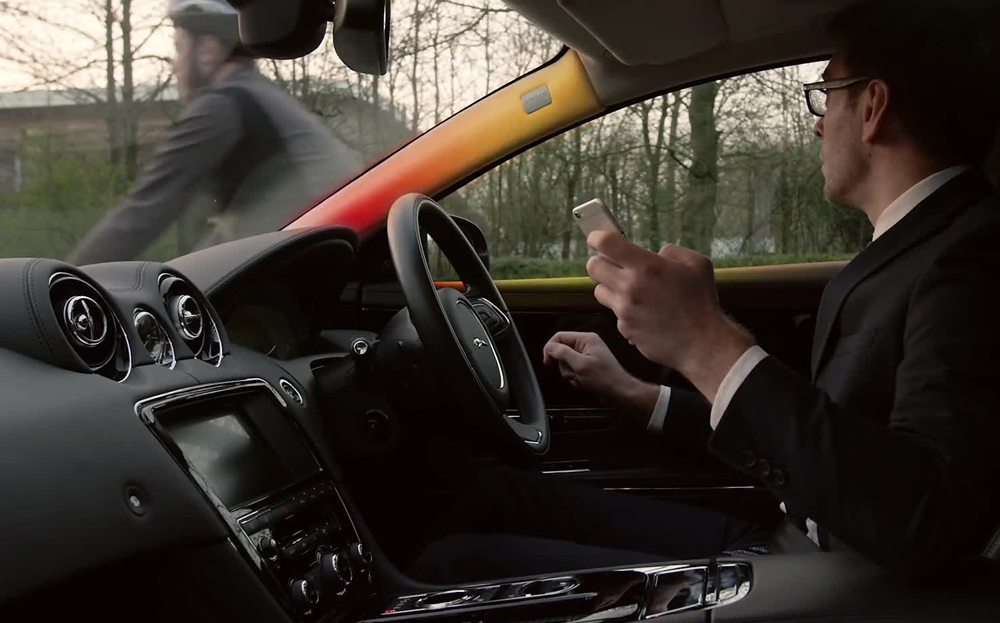Video: Jaguar Land Rover's Bike Sense system warns driver of cyclists (updated)
A tap on the shoulder from the cyclists' guardian angel

EVERY YEAR 19,000 cyclists are killed or injured on British roads, according to the accident prevention charity Rospa. Car companies are on a mission to reduce that figure. Volvo recently announced it was working on a system that will link its cars to cyclists via a smartphone app to alert both parties if a collision looks likely; now Jaguar Land Rover (JLR) has revealed that it is developing a setup known as Bike Sense.
Search for and buy your next car on driving.co.uk
JLR says its system detects cycles around the car and uses colours, sounds and physical pressure inside the car to “trigger an instinctive response” in the driver. For instance, the audio alert for a bike that is coming up behind the car is the sound of a bicycle bell played through the speaker nearest the hazard. In addition, an extending part of the seat back taps the driver on the shoulder, and LEDs on the window sills, dashboard and windscreen pillars glow amber and then red as the bike approaches. The accelerator pedal and door handles also vibrate.
“Human beings have developed an instinctive awareness of danger over thousands of years,” said Dr Wolfgang Epple, director of research and technology at JLR. “Certain colours, such as red and yellow, will trigger an immediate response, while everyone recognises the sound of a bicycle bell.
“If you see the dashboard glowing red in your peripheral vision, you will be drawn to it and understand straight away that another road user is approaching that part of your vehicle.
“By engaging the instincts, Bike Sense has the potential to bridge the gap between the safety and hazard detection systems in the car and the driver and their passengers. This could reduce the risk of accidents for all road users by increasing the speed of response and ensuring the correct action is taken to prevent an accident.”
Like JLR’s augmented reality windscreen, the technology is still in the development stage at the company’s advanced research and development centre in Gaydon, Warwickshire, so don’t expect it in your XJ for some time yet. However, unlike Volvo’s system, which requires car and cyclist to be carrying compatible technology, JLR’s system is all contained in the vehicle.
“Car-to-car communication and transponders on cyclists may well be something for the future,” JLR told driving.co.uk, “but at the moment what we’re looking at is a system within the car that doesn’t require any other road users to have any other device or equipment on them.
The system can even differentiate between cyclists, motorcyclists and pedestrians, as “each has a different volume in space”.
The whole idea is to make the driver think and act faster and smarter; if the system is too intrusive or annoying, customers are just going to turn it off
Driving was also told that, while Bike Sense is designed to reduce accidents, it is unlikely it would ever override the driver and take control of the car: “There are some systems out there that other people have been talking about that perhaps would have the car braking as a response, but if the system is too intrusive or annoying, customers are just going to turn it off. The whole idea is to make the driver think and act faster and smarter; they’re not going to do that if the system is turned off.”




